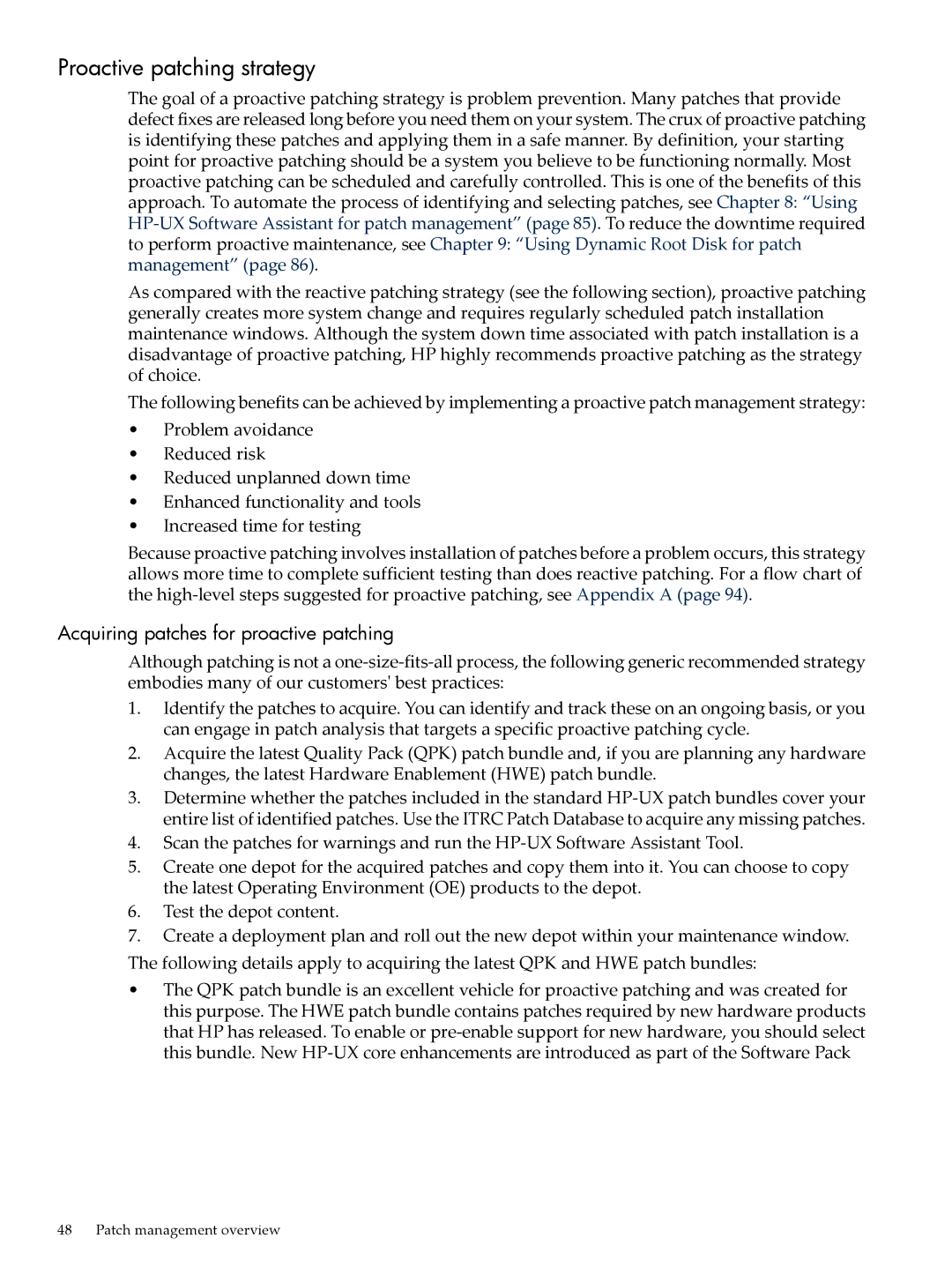Proactive patching strategy
The goal of a proactive patching strategy is problem prevention. Many patches that provide defect fixes are released long before you need them on your system. The crux of proactive patching is identifying these patches and applying them in a safe manner. By definition, your starting point for proactive patching should be a system you believe to be functioning normally. Most proactive patching can be scheduled and carefully controlled. This is one of the benefits of this approach. To automate the process of identifying and selecting patches, see Chapter 8: “Using
As compared with the reactive patching strategy (see the following section), proactive patching generally creates more system change and requires regularly scheduled patch installation maintenance windows. Although the system down time associated with patch installation is a disadvantage of proactive patching, HP highly recommends proactive patching as the strategy of choice.
The following benefits can be achieved by implementing a proactive patch management strategy:
•Problem avoidance
•Reduced risk
•Reduced unplanned down time
•Enhanced functionality and tools
•Increased time for testing
Because proactive patching involves installation of patches before a problem occurs, this strategy allows more time to complete sufficient testing than does reactive patching. For a flow chart of the
Acquiring patches for proactive patching
Although patching is not a
1.Identify the patches to acquire. You can identify and track these on an ongoing basis, or you can engage in patch analysis that targets a specific proactive patching cycle.
2.Acquire the latest Quality Pack (QPK) patch bundle and, if you are planning any hardware changes, the latest Hardware Enablement (HWE) patch bundle.
3.Determine whether the patches included in the standard
4.Scan the patches for warnings and run the
5.Create one depot for the acquired patches and copy them into it. You can choose to copy the latest Operating Environment (OE) products to the depot.
6.Test the depot content.
7.Create a deployment plan and roll out the new depot within your maintenance window.
The following details apply to acquiring the latest QPK and HWE patch bundles:
•The QPK patch bundle is an excellent vehicle for proactive patching and was created for this purpose. The HWE patch bundle contains patches required by new hardware products that HP has released. To enable or
